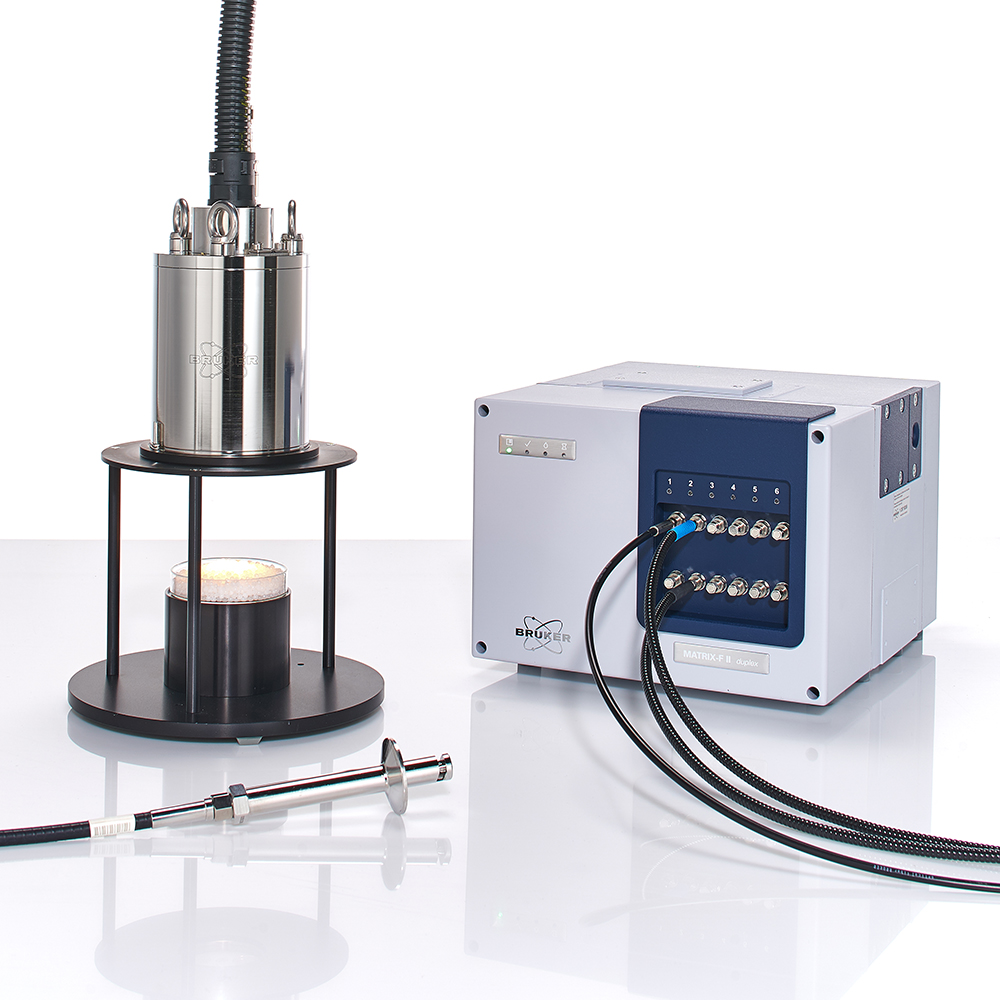

Technical Solutions
Smart Technical Solutions under all Conditions
Bruker's team of process specialists advise you on selecting the best measuring accessories, installation locations and communication protocols for your analytical task.
Bruker has been a competent partner in the field of FT-NIR spectroscopy, process analysis and for the realization of demanding projects for 20 years.
The knowledge and experience from these years are in the FT-NIR process spectrometer MATRIX-F II. Up to 6 probes can be connected in parallel to the permanently adjusted spectrometer in a robust design.
Key advantages of the MATRIX-F II:
- Accurate in-line results in seconds
- Non-destructive, multi-component analysis
- Optional built-in 6-port multiplexer, for up to 6 probes/flow cells/sensor heads
- Direct method transfer
- Rugged, low maintenance design
- RockSolid™ technology for rough measurement conditions
- 10 years warranty on moving parts of the interferometer and solid state laser
- Available for hazardous locations and EX areas
- Ethernet connectivity and industry standard communication protocols are available
For a variety of technical solutions such as specially developed process spectrometers, customized probes and the sensor head Q412, Bruker also relies on the products of strong cooperation partners for process probes and flow cells.
In order to guarantee optimal performance and stability in process monitoring in addition to the technical aspects, Bruker has developed the process communication software CMET.
CMET is the link between Bruker’s outstanding FT-NIR process analyzer and the customers Distributed Control System (DCS). Commands given by the DCS are transferred to CMET which in return starts a specific measurement and transmits the data back to the DCS for visualization and archiving.
The NIR sensor head was designed by Bruker for contactless measurements of moving solid materials in diffuse reflectance mode. Compared to conventional reflectance probes the sensor head offers some unique advantages:
- 20 times more light than a conventional diffuse reflectance probe by the two NIR light sources.
- Less expensive monofibers are used to transmit the light to the spectrometer, compared to used fiber bundles by conventional reflectance probes.
- Automatic background measurement fuction by using an integrated reference standard without dismounting the head.
- Ideal for measurements of heterogeneous materials thanks to the large sampling area.
The previously presented solutions can be flexibly installed in the process environment. Probes as well as sensor heads and flow cells can be mounted directly (inline) in the reactor or in the pipeline. Additionally, installations in an existing bypass (online) are possible. Both options can be realized via various flange adaptations.

